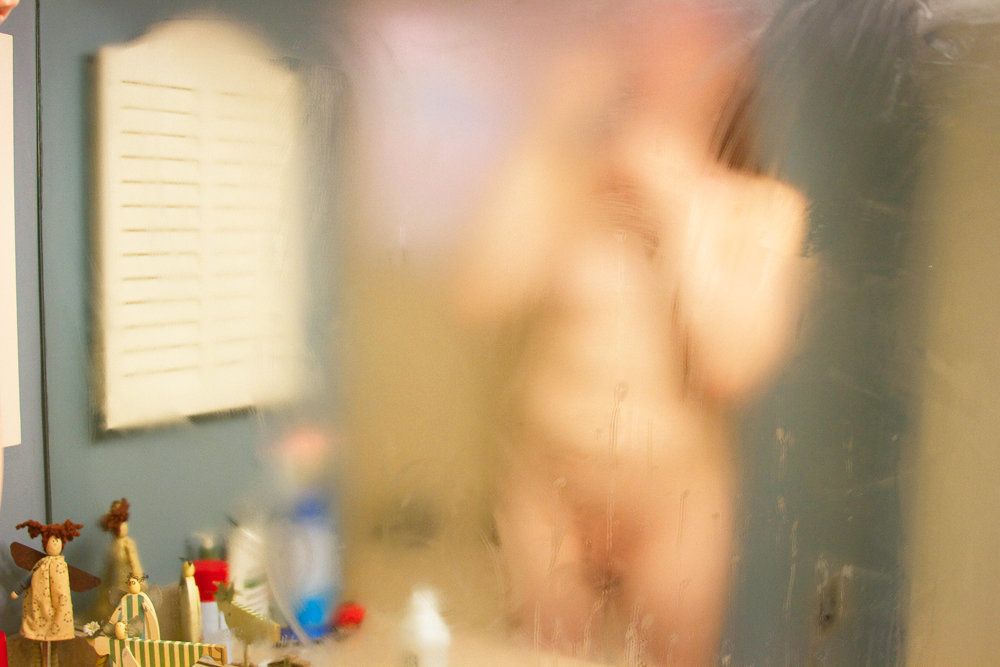Note: This article contains images of nudity.
The first photograph in Jennifer Loeber's series "Gyrle" was taken in 1987 at a "hippie camp", as she describes it, wedged inside Massachusetts' Berkshire Mountains.
The grainy photo shows a horde of campers, arms slung around one another to form a chain of tangled bodies and limbs. The image is eerily fuzzy, save for two faces that appear intentionally crystal clear. In the top right corner there's Jennifer, not yet a documentary photographer but a teen girl with floppy, side-parted hair. And in the centre, there's Mac, shaggy-haired and smiling.
The photo on its own, like arcane evidence of a bygone time we're meant to pore over for some unknown reason, doesn't give the viewer any indication as to why we should pay attention to Jennifer and Mac. Mac isn't looking longingly at Jennifer, hinting at some recondite connection ― nor vice versa. In reality, the two knew each other, but not well. Neither one could have predicted that decades later they'd collaborate on a project about the struggles and triumphs of burgeoning womanhood.
Though, at the time, Mac already thought of herself as a girl "pretending to be a boy".
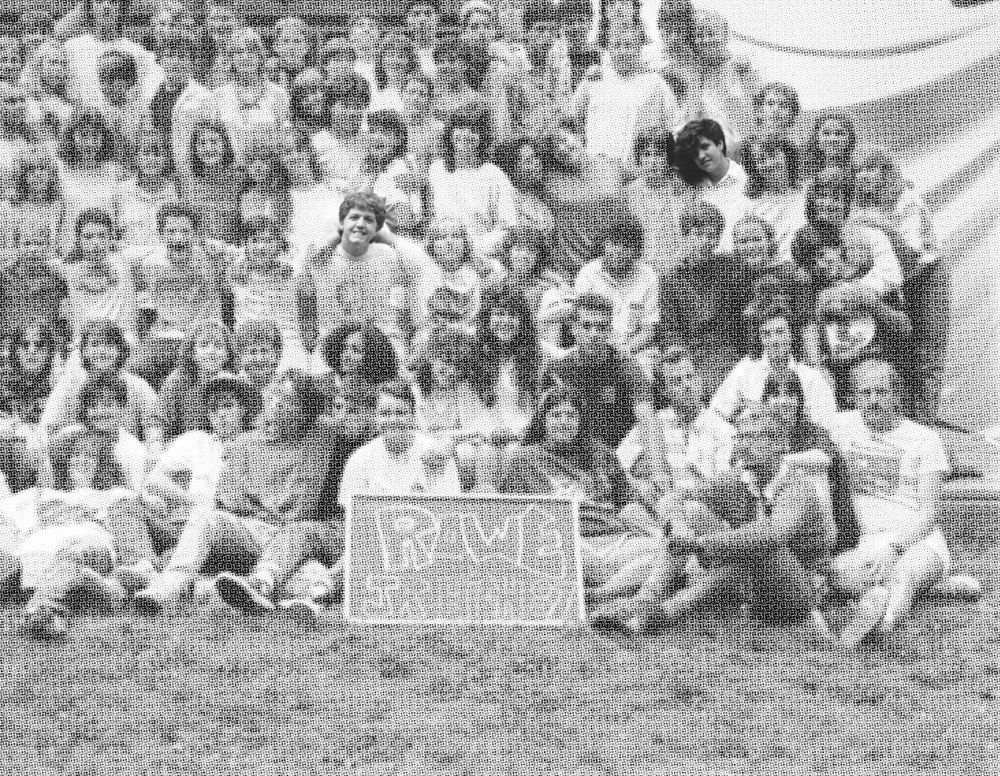
"I've known I was a woman since as far back as I could remember," Lorelei Erisis explained in a phone conversation last month. She'd known long before she came out as trans, began hormone replacement therapy and changed her name from Mac to Lorelei.
Loeber had no idea. Back in the Eighties, she never knew that Erisis had a crush on her, either ― that she was basically the first woman Erisis came to see in this way. "She was this cool, punk girl from New York," Erisis said of Loeber. "I was an awkward, not-yet-out trans kid from Cape Cod."
She didn't know, but Loeber's impact on Erisis was so profound that when Erisis began to transition at 33 years old, she held Loeber's particular performance of womanhood in mind as an archetype.
"The woman I am in the world today is inspired by the woman Jennifer was when I met her," Erisis said.
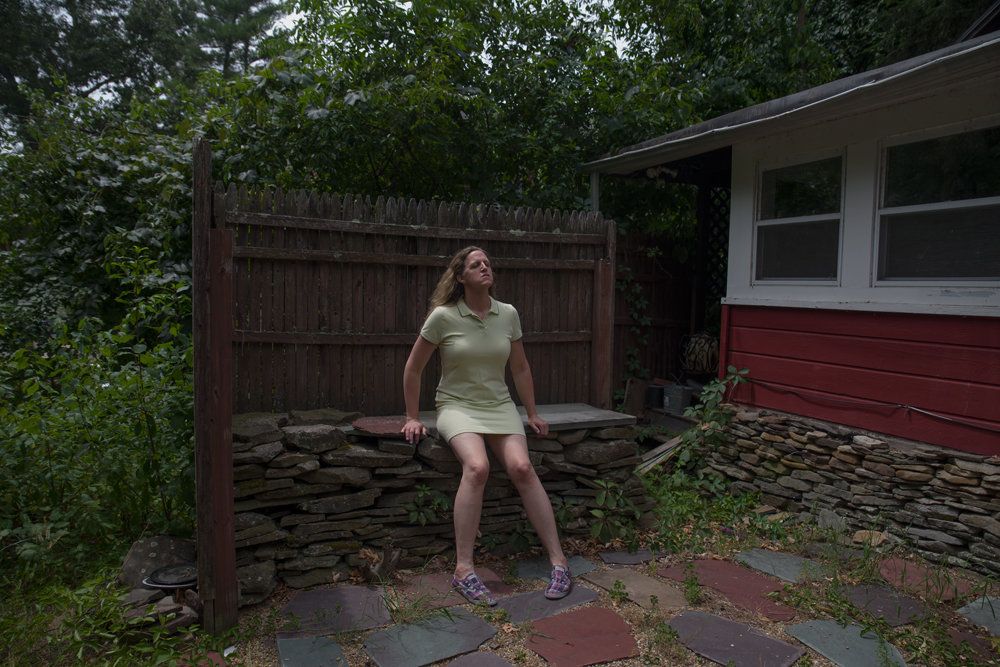
This ritual ― of imagining womanhood and attempting to perform it ― is familiar to many cis girls and trans women, though there's no one universal experience.
By fixating on different manifestations of femininity, borrowed from a mother or a teacher or a celebrity, we can try different ideas of womanhood on for size. The way we construct our gender identity thereafter is carefully informed by a variety of these influences and ideas, a self-conscious collaging of gestures, verbal mannerisms, fashion and beauty ideals accrued over the years.
When Erisis was transitioning, there were no mainstream images of trans women to try on. So she decided to model her feminine self, in part, on her image of Loeber at camp, incorporating her into an abstract pastiche of gender identity.
Years later, Loeber would make the process of collaging physical. "Gyrle" is largely the story of Erisis' experience with womanhood. But the series, collected over the course of four years, is also an exploration of the similarities between Loeber's own coming-of-age story and Erisis' mid-life coming-of-age ― of how both women came to understand and perform femininity in their separate but intertwining lives.
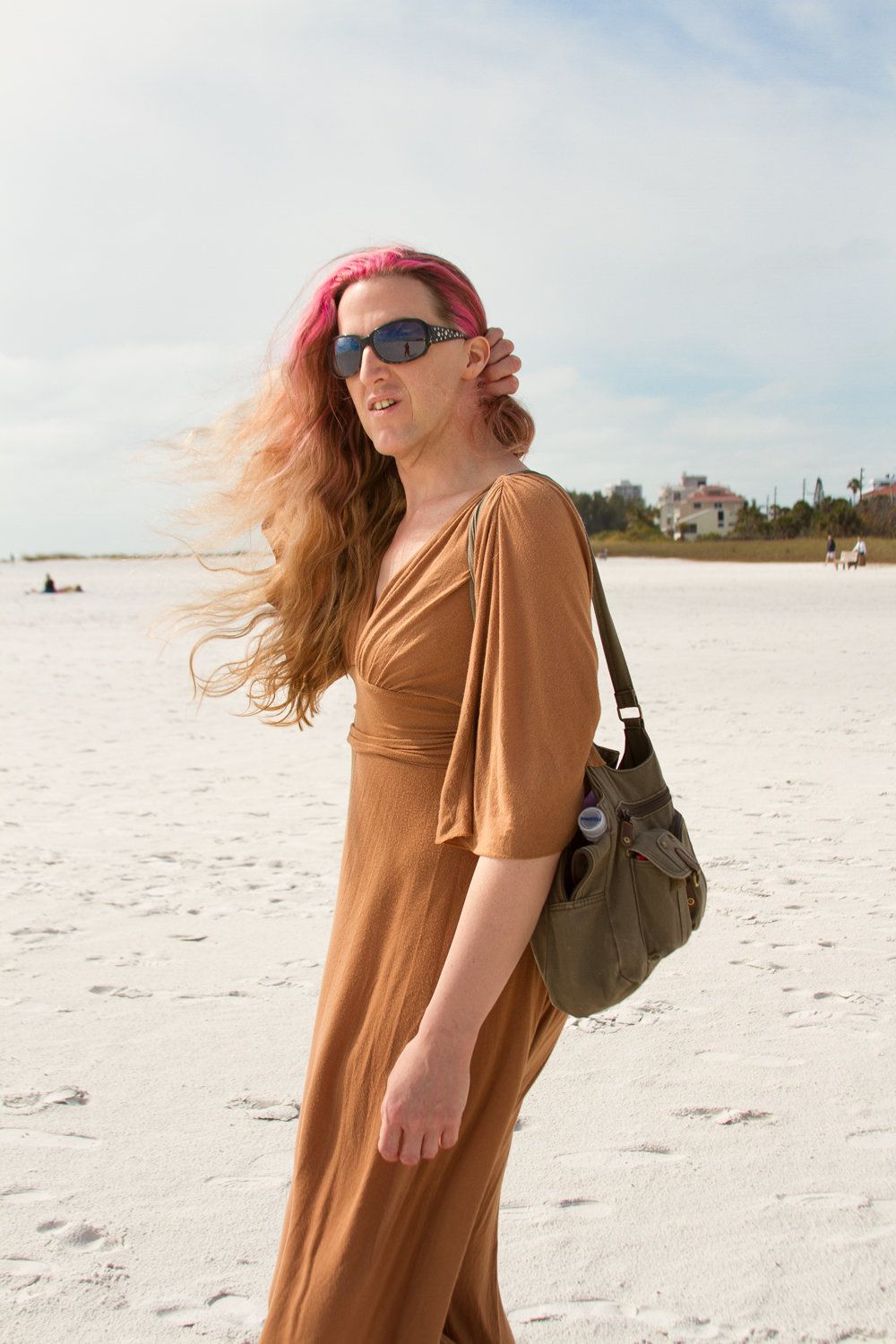
Loeber and Erisis lost touch after camp, but around 15 years later they reconnected in the same way so many of us managing friendships in the aughts have: Facebook.
There on social media, Loeber learned that Erisis had come out as trans. Years after that, in 2012, the photographer reached out to her old acquaintance with an unusual offer: She was working on a photo series depicting nude women in domestic spaces. Would Lorelei consider posing?
The natural-born performer agreed right away. "I didn't feel especially comfortable in my body, but I always felt comfortable in front of the camera," Erisis said. The photo shoot took place on a blow-up mattress in Loeber's apartment and flowed naturally for both artist and subject. As the only non-cisgendered woman in the series, Erisis was pleased that her embodiment of womanhood was included.
In part, Erisis agreed to be photographed because she wished such images had existed when she was first considering her transition. "I'd go on the internet and try to look for images of trans people, and all I could find was page after page of porn. No judgment on porn at all, I have a lot of friends who are talented adult performers. But I appreciated that Jennifer was presenting a trans body in a normalising way."
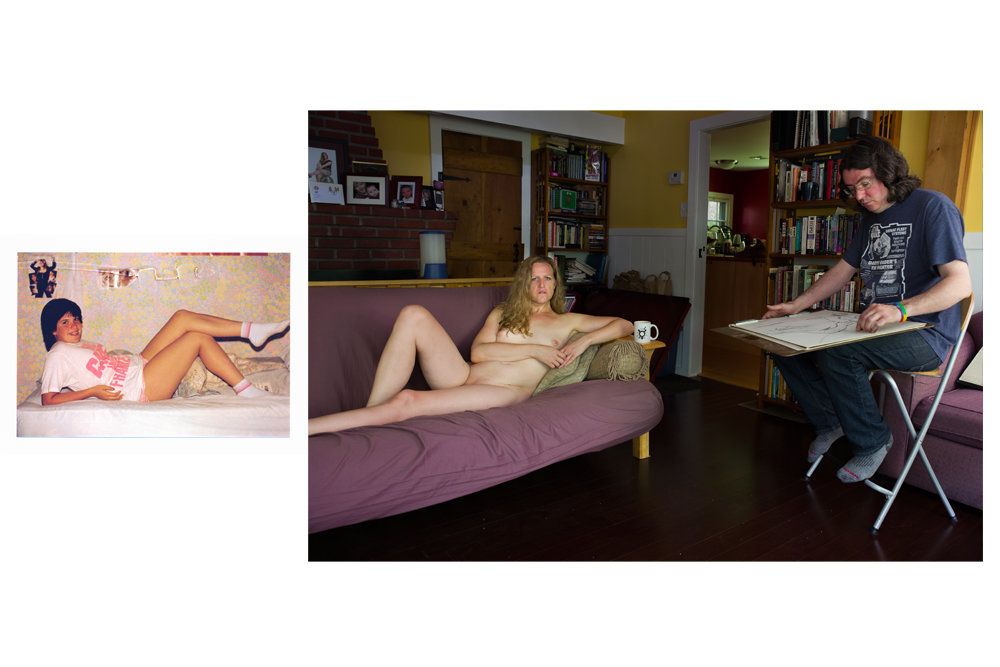
Later, when Loeber revisited Erisis' photos from the series that same year, she realised "there was a lot more to [Lorelei's] story." So she reached out again, this time asking if she could follow Erisis around and chronicle her life, documentary-style, "potentially for years". And "Gyrle" was born.
Again, Erisis agreed without hesitation. Over the next several years, Loeber visited Massachusetts four times a year for five days at a time, documenting the minutiae of Erisis' daily life as a trans woman.
Loeber watched as Erisis tried on turquoise heels at Payless Shoes, her waist-length blond hair dangling over her shoulder. She watched as a freshly showered Erisisexamined a small jewel of blood on her jaw, the residue of a shaving slip.
Although Loeber never explicitly told Erisis what to do or how to pose, she would occasionally holler "Don't move!" if a particular moment or movement captivated her attention. The resulting snapshots document a state of heightened reality, a true story stretched out in some moments and frozen in others. They landed somewhere between fine art and photojournalism, until something changed.
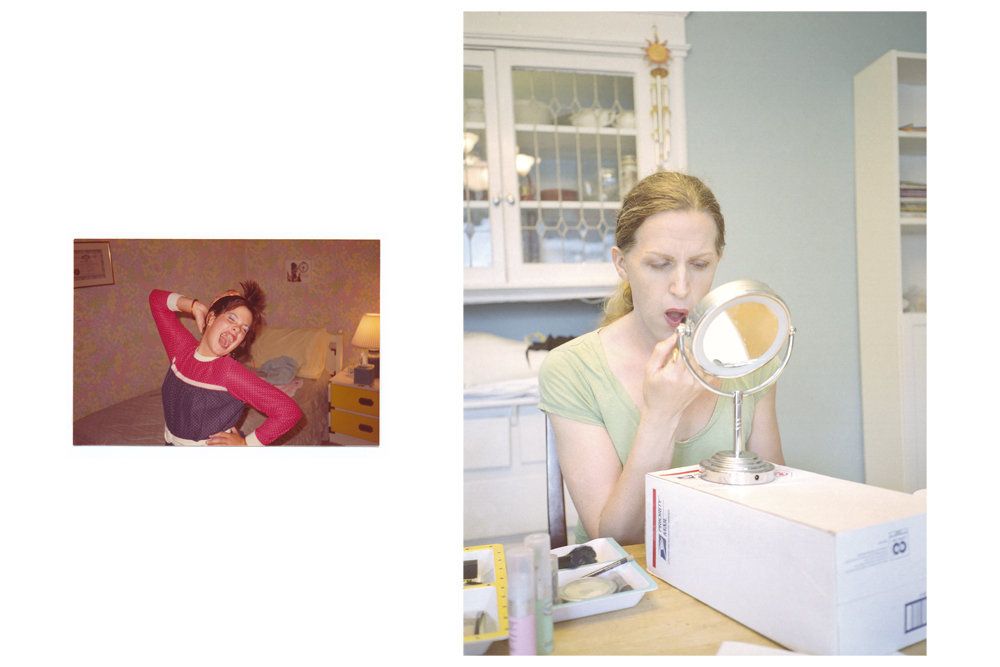
Initially, Loeber used the camera as a proxy for her own curiosity, she explained to HuffPost. However, a few years into creating the series, her larger conception of the thing she was making evolved.
"I started noticing the similarities between what Lorelei was going through and what I was going through during puberty," Loeber said. Breaking down the relationship between artist and subject, observer and observed, Loeber placed her own experience coming into womanhood alongside Erisis', framing herself as a supporting character in a larger saga.
Loeber juxtaposed photos of Erisis with analogous vintage snapshots of herself as a tween, still experimenting with styles, poses and personas. Often the two images mirror each other to an uncanny degree, reflecting the types of acceptable femininity women try on like footwear when fumbling to find themselves.
Erisis affirmed the idea that hormone therapy launched her into a second puberty. "I had the hormone levels of a 16-year-old girl," she said of her transition. "I would cry at commercials. I would have these teen girl temper tantrums, the whole nine yards."
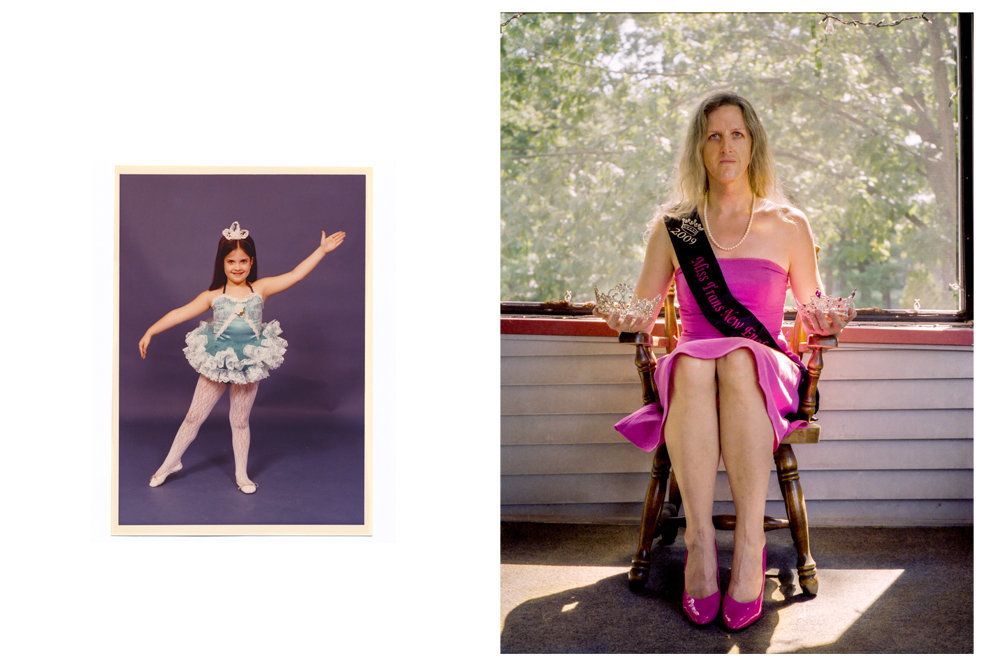
Through "Gyrle", Loeber doesn't equate her own experience with Erisis' but illuminates the threads that affix them. At times, the resemblance between young Jennifer and grown Lorelei seems preternatural. This, Erisis believes, is no pure coincidence but rather the logical result of the impression Jennifer made on Mac when they were campers back in the day.
"Her adolescence inspired my delayed adolescence, or rather informed it," she said.
One of the most striking images of the series, however, involves Erisis' mother. The two appear together in the photo, both of them nude. Erisis has pink streaks in her hair; her mom opted for teal. The mother-daughter resemblance echoes the parallel between Erisis and Loeber but hints at a far grander kind of connection that extends beyond familial ties and physical anatomy.
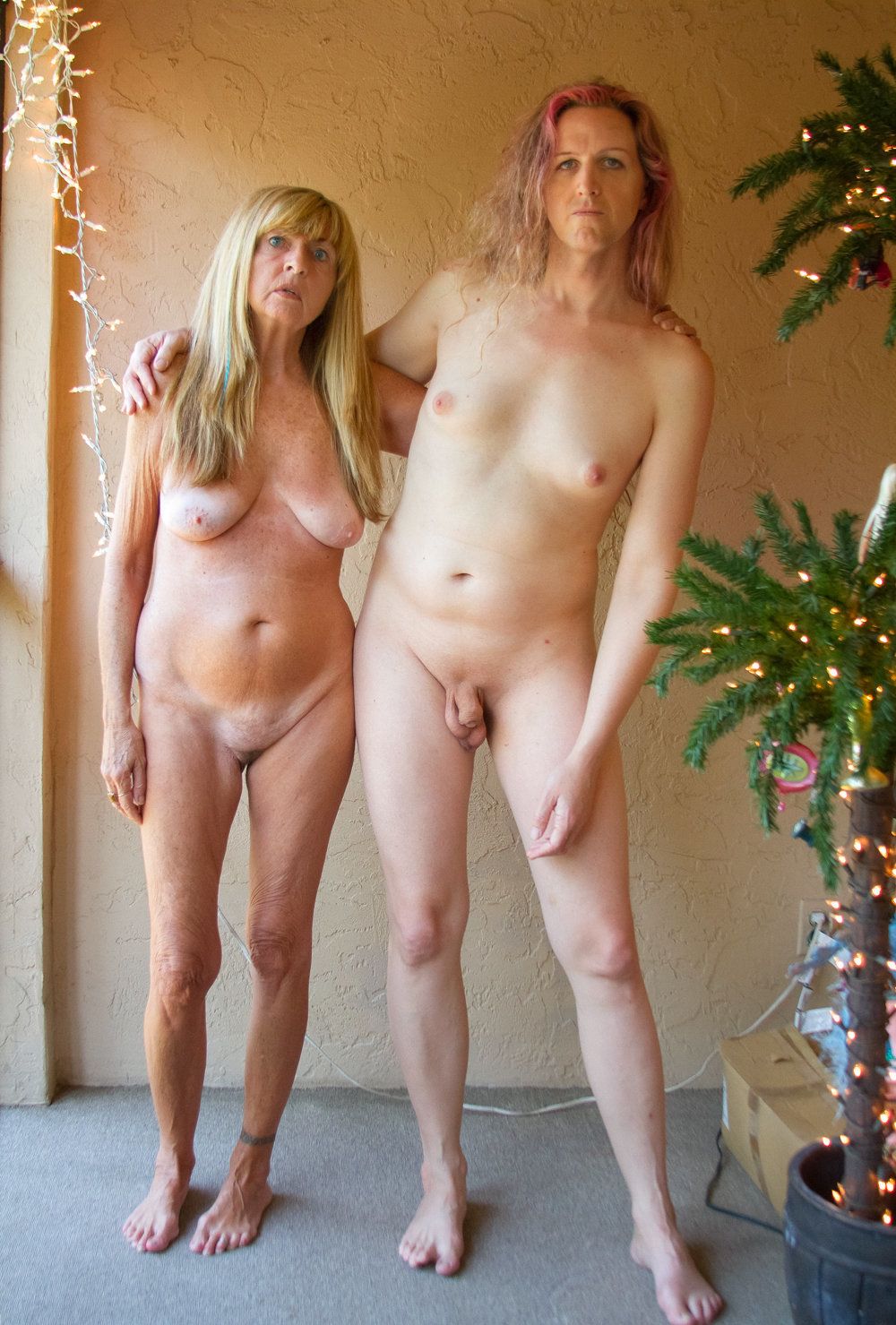
Loeber's takeaway from the series is bittersweet.
"Women are held to an impossible standard, and it doesn't matter if you are cis or trans," she said. "Lorelei went through all the stuff I went through as a teenager, the feelings of being awkward and unattractive. Watching her go through all the same stuff was both comforting and depressing."
In the end, the mimesis yielded more consolation than disappointment, and Erisis is able to marvel at the surprising links between the two women's divergent life experiences.
"It's nicely normalising," Erisis said.
#TheFutureIsQueer is HuffPost's monthlong celebration of queerness, not just as an identity but as action in the world. Find all of our Pride Month coverage here.
